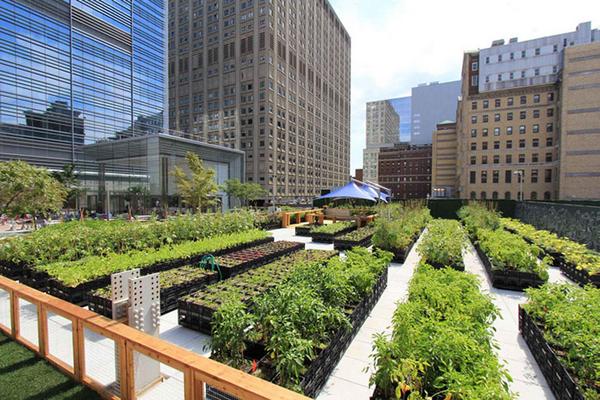The Main Principles Of City Blooming
The Main Principles Of City Blooming
Blog Article
City Blooming Fundamentals Explained
Table of ContentsThe Best Strategy To Use For City BloomingCity Blooming Fundamentals ExplainedAn Unbiased View of City BloomingNot known Facts About City BloomingThe Ultimate Guide To City Blooming
Intrigued in growing food to buy in the City of Chicago? Thinking concerning beginning a neighborhood yard? Changes to the Chicago Zoning Regulation enable farming usages like area gardens and urban ranches in lots of components of the city. Below is a checklist of regularly asked inquiries relating to the policies and laws that farmers must take into consideration when preparing a city agriculture job.
The zoning amendment does not customize any type of other codes managing composting, building licenses, buying or leasing City owned building, organization licenses or environmental contamination. There are existing codes that regulate these concerns and they remain in complete effect and might apply to your project. Area yards are typically possessed or taken care of by public entities, civic companies or community-based companies and maintained by volunteers.
Urban ranches grow food that is meant to be sold, either on a nonprofit or for-profit basis. As a result of their commercial objective, urban ranches require an organization license. Yes. A community garden is permitted to sell excess generate that was grown on website if the sales are accessory or secondary to the garden's main function explained over.
City Blooming Fundamentals Explained
Composting is allowed but just for plant material that is produced and made use of on site. The quantity of garden compost material can not surpass 25 cubic yards at any offered time according to the criteria in 7-28-715 of the City's Municipal Code. Yes. Due to the fact that the soil at many brand-new garden websites needs amending, garden compost, dirt, timber chips, or other materials can be gotten to create or improve the growing space - balcony and patio garden design.

If a building license is needed after that the hoophouse will certainly be thought about an accessory structure. You can find out more about the structure license demands by calling the Department of Structures. The 25,000-square-foot size limitation is meant to protect against a single community garden from controling a given block or diminishing the block's existing household or business character.
The limitation does not apply to gardens found in Public Open Room (POS) areas. Can there be even more than one area yard that is 25,000 square feet on a single block? Fencing is not called for, nonetheless, gardens that have big parking locations might be required to mount fence or other landscape design functions.
More About City Blooming
B1 & B2 districts call for link that all industrial use activities be conducted indoors. R districts restrict business activity. The guidelines reflect the objective and intent of the Zoning Code. Is secure fencing needed for metropolitan ranches? Yes. Fences may be required, in addition to landscaping and screening, for sure car park areas and outdoor work or storage areas relying on location and the details activity taking place.
Yes. Urban ranches require building licenses and zoning approvals before building and construction. Other kinds of city evaluation may be required depending on certain frameworks, activities, size, landscaping, licensing, public health and stormwater management concerns. Much of these needs are determined in the job style or allowing procedure, nonetheless, the applicant may be liable to independently determine particular licenses or allows that might be needed.
The Department of Service Matters and Consumer Security can assist determine the particular type of service certificate that's called for. Off street vehicle parking is required for a lot of commercial tasks in Chicago. The required number of car parking spaces is based on the number of employees functioning on website and not the square footage of the expanding room.
The 8-Second Trick For City Blooming

Yes. An urban farm can sell compost product created on website, however, the procedure needs to follow the laws in 7-28-715 of the Chicago Municipal Code. Yes. Aquaponic systems are permitted inside your home on city ranches in lots of zoning districts. A zoning testimonial and structure authorization is required in order to mount structures or systems and a business license is called for as described over.
Up to five hives or swarms of honey may be maintained as an accessory use. Nevertheless, beekeepers have to sign up with the Illinois Division of Agriculture. To learn more regarding the proposed zoning modification you may get in touch with the Division of Housing and Economic Development, Bureau of Planning and Zoning at 312.744.8563.
Farming in cities and metropolitan areas A city farm in Chicago. Urban farming describes different practices of growing. https://cityblooming.blog.ss-blog.jp/2024-06-27?1719472203, handling, and distributing food in city locations. The term likewise applies to the area activities of pet husbandry, tank farming, beekeeping, and horticulture in a metropolitan context. Urban agriculture is distinguished from peri-urban farming, which takes location in backwoods beside suburbs.
The 6-Second Trick For City Blooming
, who seek to form social networks started on a common principles of nature and community holism. These networks can establish by way of formal institutional support, becoming integrated into local community planning as a "change town" movement for sustainable urban advancement.
The more direct accessibility to fresh veggie, fruit, and meat items that might be understood via urban farming can improve food protection and food security while lowering food miles, resulting in lower greenhouse gas discharges, consequently adding to climate adjustment mitigation. Several of the very first proof of urban farming originates from Mesopotamia.
Report this page